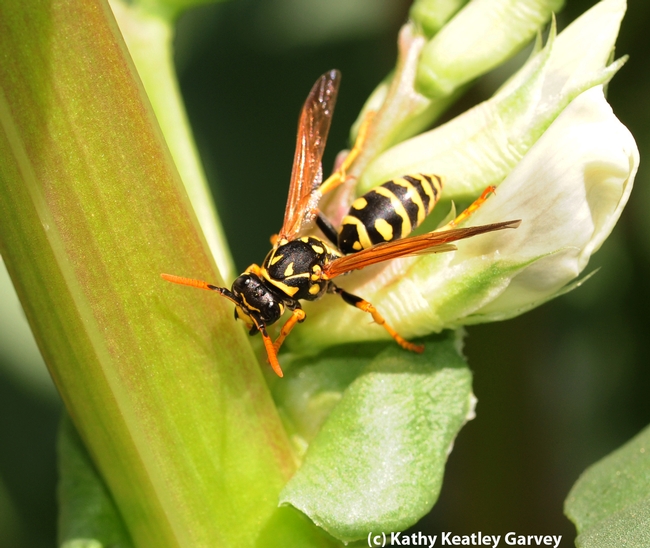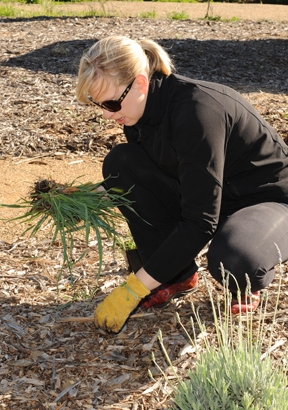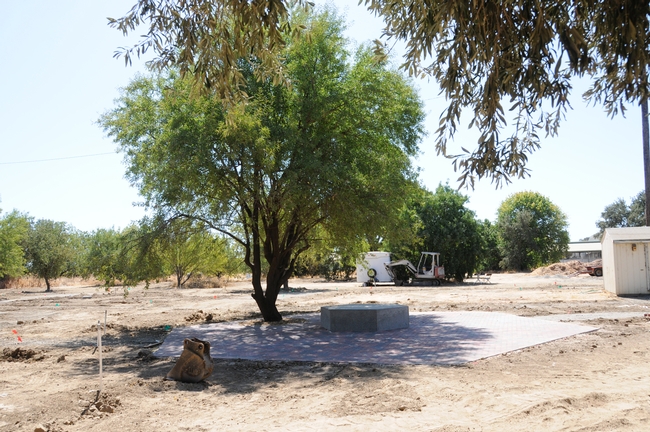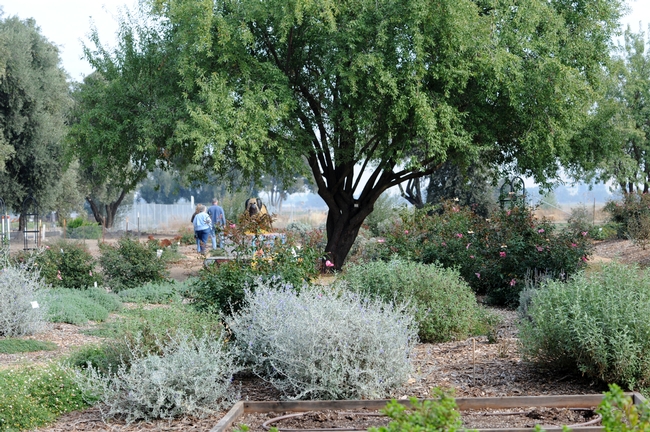- Author: Kathy Keatley Garvey
People aren't the only ones favoring fava beans.
Fava beans growing in a raised bed in the Häagen-Dazs Honey Bee Haven on Bee Biology Road, UC Davis, are attracting honey bees, European paper wasps, lacewings, ladybugs, aphids and carpenter bees.
We saw all six insects on a trip to the haven last Friday.
While the honey bees and carpenter bees gathered nectar, the European paper wasps, lacewings and the ladybugs searched for prey. The ladybugs were also searching for mates.
The half-acre bee friendly garden, located next to the Harry H. Laidlaw Jr. Honey Bee Research Facility, west of the central campus, is open year around from dawn to dusk. Admission is free. Visitors can conduct their own self-guided tours by following the signs and reading the plant labels. Groups that want a guided tour (the cost is $4 per person) can contact Christine Casey at cacasey@ucdavis.edu.
Meanwhile, life is good in the fava beans.




- Author: Kathy Keatley Garvey

And the other pollinators.
And the plants.
We were glad to see that Melissa "Missy" Borel, program manager of the California Center for Urban Horticulture at UC Davis, recently received a much deserved honor for her work in making the Häagen-Dazs Honey Bee Haven a reality.
Borel, recipient of a 2011 Distinguished Citation for Excellence from the UC Davis Staff Assembly, drew a round of applause at the awards reception at the home of Chancellor Linda Katehi. Campuswide, only two other individuals--and two teams--received a Distinguished Citation for Excellence. Their names will be engraved on a perpetual plaque at the Walter A. Buehler Alumni and Visitors' Center.
Borel's award is closely linked to the haven, a half-acre bee friendly demonstration garden planted next to the Harry H. Laidlaw Jr. Honey Bee Research Facility on Bee Biology Road, west of the central campus. The haven is is a year-around food source for the Laidlaw bees and other pollinators, an educational resource for visitors, and a research garden.
Borel coordinated the design competition, helped develop the garden through donations and an outreach program, and recruited and coordinated additional campus programs to add educational and art content to the garden.
A product of UC Davis (bachelor's degree in plant sciences and master’s degree in horticulture and agronomy), Borel meshed with five distinct campus units and three extra agencies during the design and building phases of the garden. More than 80 percent of the garden was installed with donated materials.
Borel offered her expertise on plants, asked for donations from a network of friends and colleagues in the horticulture industry, granted news media interviews, and helped with the official opening of the garden on Sept. 11, 2010.
Borel continues to be actively involved; you can usually find her out there every Friday morning tending the garden and working side by side with a corps of other dedicated volunteers.
And Missy Borel would be the first to tell you that the garden is the work of many people--administrators, faculty, staff, donors and volunteers.
The garden, installed under the watch of Bohart Museum of Entomology director and entomology professor Lynn Kimsey, then interim chair of the UC Davis Department of Entomology, has become a campus destination where visitors learn about bees and pollinator landscaping and can admire the art (a six-foot-long bee sculpture, beehive art, and mosaic of native bees).
What was once a field of nasty weeds is now a field of pollinator dreams. When you walk through the garden or enjoy lunch at a picnic table, you become very aware of the plight of the bees--and the beauty of the garden. The garden is a gift to UC Davis Department of Entomology, but more than that, it's a gift to the university, to the surrounding communities, and to all of us who care about what's happening to the bees.
A tip of the gardening hat to Missy Borel!





